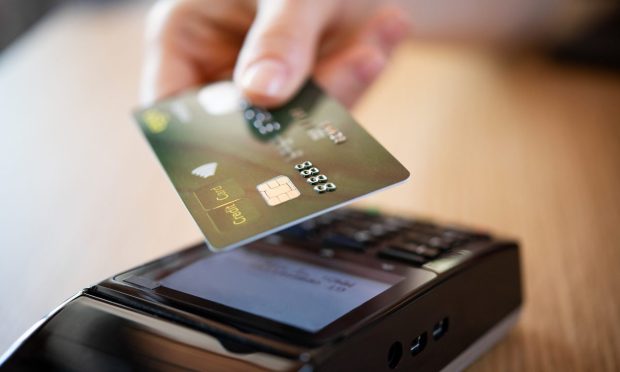New Study: Consumers Would Rather Tap Their Cards Than Wave Their Wallets

As more cardholders use contactless technology, new PYMNTS data show that fewer are using mobile wallets. The reason given by most consumers is convenience.
In the competition between consumer payment methods, don’t count out the card just yet. According to soon-to-be released research from PYMNTS, the more cardholders pay for purchases with contactless technology, the less they use their mobile wallets.
In fact, since 2020 the share contactless credit card, debit card and store card usage has doubled. At the same time, the number of consumers who report tapping their card to make an in-store purchase within the past 24 hours leapt from 4.6 percent in 2020 to 10.8 percent in 2021.
In contrast, the share of consumers who report using a mobile wallet has declined. Specifically, using the same prior 24 hour metric, users surveyed by PYMNTS who said they’d done a mobile wallet transaction in the last 24 hours slipped to 4.5% this year from 5.1% in 2020.
Consumers Want Convenience
Convenience is the most cited reason for using contactless technology, an answer that was true among consumers of every generation.
Speed is the most second-most common reason cited by members of Generation X, bridge millennials and millennials. But speed was ranked 4th by baby boomers and seniors and by Generation Z.
Other reasons were ranked lower by most cardholders.
Security is ranked No. 2 by Gen Z and No. 3 by baby boomers and seniors. The other three cardholders put security fourth on their list of reasons for using contactless technology.
Wide acceptance is the second most often cited reason by baby boomers and seniors. The other four groups of consumers put that third among their rankings.
Finally, fraud protection is the least cited of the five reasons for using contactless technology, with consumers of all ages ranking this lowest on their list.
Limited Availability, Poor Compatibility
Enjoying those benefits, consumers of all ages said the two main reasons they don’t use contactless technology are because it’s not available or not compatible.
A lack of availability is the top reason. Among the consumers who had made an in-store purchase during the past 24 hours using a card but hadn’t used contactless technology, most said that was because the technology was not available. Consumers in all segments said that was the most common reason.
Incompatibility was the second-most common reason. Here too all consumer groups ranked that No. 2 on their list.
Five other reasons were ranked lower by cardholders.
“Don’t know how to” is the third most common reason cited by four of the age groups. Bridge millennials were less likely to say they don’t know how to use contactless technology; they ranked that No. 4 on their list.
“It feels slower” is the No. 4 reason three of the cardholder segments say they didn’t use contactless technology. Bridge millennials are more likely to say that, ranking it No. 3, while Gen Z put it No. 5 on their list.
Fraud concerns were the fifth most-cited reason by consumers of four of the generations. Gen Z put it sixth on their list.
Two of the reasons for not using contactless technology were cited by fewer than 11.7 percent of the consumers.
Inconvenience was ranked No. 4 by Gen Z, No. 6 by boomers and seniors, and No. 7 by the other cardholders.
Lack of security was ranked No. 6 by Gen X, bridge millennials and millennials. It was ranked seventh by baby boomers and seniors and Gen Z.
With consumers saying they enjoy the convenience of cards with contactless technology and adding that the main reasons they don’t use it is when it’s not available or not compatible, the future of these cards looks strong.
